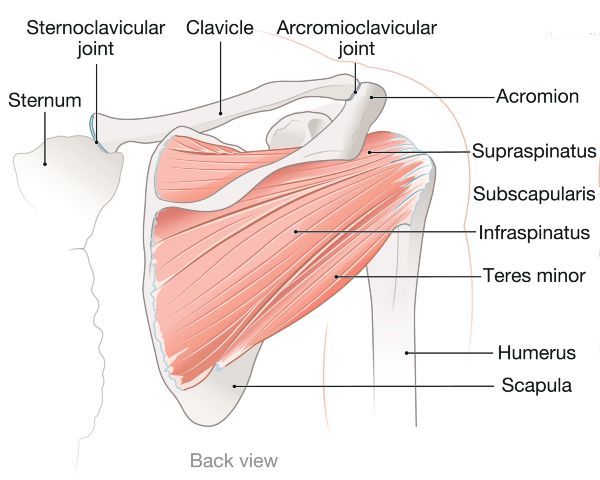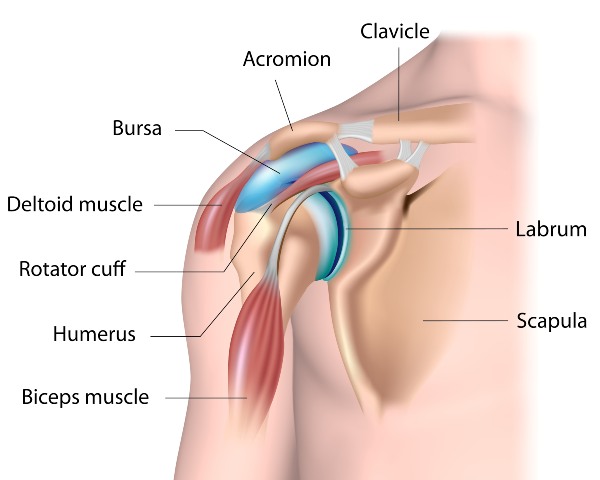ARTHROSCOPIC ROTATOR CUFF REPAIR MELBOURNE
ROTATOR CUFF ANATOMY
The anatomy and function of your rotator cuff
Your shoulder is made up of three bones: (1) Humerus – the upper arm bone, (2) Scapula – the shoulder blade, and (3) Clavicle – the collarbone. The ball, or head, of the humerus fits into a shallow socket in the shoulder blade.
Your arm is kept in your shoulder socket by four rotator cuff muscles:
(1) Supraspinatus – Responsible for movement away from the centerline of your body (abduction).
(2) Infraspinatus – Is the main muscle responsible for external rotation of your arm away from the centerline of your body.
(3) Teres minor – Is a small, narrow muscle on the back of your shoulder blade just below infraspinatus. It also contributes to external rotation.
(4) Subscapularis – Is a large triangular muscle on the front of the shoulder blade responsible for internal rotation of your arm.
Bursa – The Bursa is a lubricating sac that sits between the rotator cuff and the bone on top of the shoulder and allows the rotator cuff tendons to glide freely when you move your arm. When the rotator cuff tendons are injured or damaged, this bursa can also become inflamed and painful.
Shoulder & Rotator Cuff Anatomy


Figure 1
ARTHROSCOPIC ROTATOR CUFF SURGERY
The aim of an Arthroscopic Rotator Cuff repair is to reattach or repair the torn ligament/s. Most patients can expect a 6-12 month rehabilitation period.
On the morning of your surgery your anaesthetist will examine you and make sure you are fit to undergo an anaesthetic. He will explain the anaesthetic to you.
The operation takes approximately 1-2 hours and involves 4 or 5 very small incisions around the shoulder.
The acromion bone may be trimmed and the coraco-acromial ligament removed. Both these structures rub on the rotator cuff and may have contributed to the rotator cuff tear.
The rotator cuff is then inspected and the tear is repaired using suture anchors and stitches.

POTENTIAL COMPLICATIONS
The surgery complications which may occur after a arthroscopic rotator cuff repair may include:
- Shoulder stiffness and restricted movement
- Infection
- Numbness or tingling around the shoulder
- Recurrent tendon tear.
Dr Pullen will discuss with you in detail the potential complications and risks in relation to the surgery.
Proud member of Royal Australasian College of Surgeons and Australian Orthopaedic Association.


Arthroscopic Rotator Cuff Repair Surgery Melbourne
Dr Pullen treats patients from all over Victoria in relation to shoulder injuries. He consults with patients at the following practice locations in Melbourne including East Melbourne and Ringwood.


